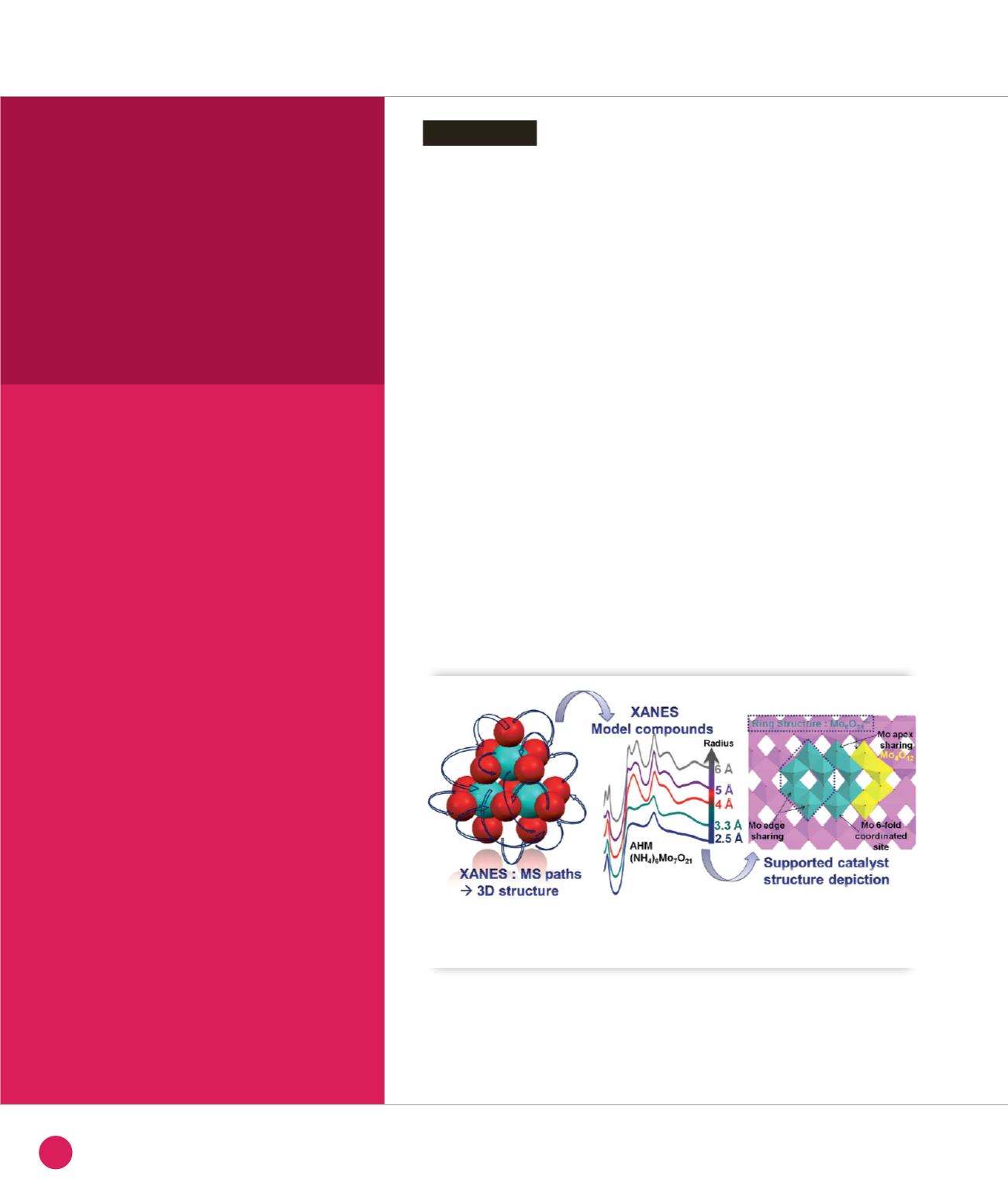
Coupling XANES and DFT
calculations to unravel
the structure of
heterogeneous catalysts
Supported molybdenum catalysts are widely
used in their sulfide state in the treatment
petroleum fractions, which are important
economic and environmental issues.
In their oxide states they can be used in the
partial oxidation of ethanol and methanol.
We have used X-ray absorption spectroscopy
on SAMBA coupled with DFT calculations
to better understand, on a molecular level,
the structure of the active phase of these
catalysts and how it interacts with the
support. The long-term aim is to improve the
catalytic performance of this type of material.
Catalysis is one of the fundamental pillars
of our modern industry since the products
manufactured through catalysis processes
account for 10-15% of the gross national
products of industrialized countries.
The large majority of this production
(up to 80%) is obtained through the
heterogeneous catalysis. Improving
heterogeneous catalysts is thus the
heart of numerous academic and
industrial research centers. Supported
molybdenum oxides are widely used in
heterogeneous catalysis field for numerous
purposes [1]. However, a molecular-
scale understanding of active phase
structure of supported oxomolybdate
species formed on the activated catalyst
is still lacking even though it has been
extensively characterized by various
spectroscopies (XAS, RAMAN, XPS, NMR).
This identification is a challenge which
will permit a rational design of this class
of catalysts. Among possible techniques,
XAS [2] is very well suited to characterize
catalysts at a molecular level as it is an
element-selective spectroscopy, probing
both the electronic state of the absorbing
element and its local environment.
Although EXAFS is often used, XANES
is also known to be very sensitive to the
environment around the absorber atom.
In addition, as the amplitude of XANES
spectra is proportional to the density
of unoccupied states, it can be regarded
as a true probe of the electronic structure
around the absorber atom. XANES being
highly dependent of electronic parameters
as the oxidation state or the hybridization
between atomic orbitals, its interpretation
is not as straightforward as EXAFS.
Nevertheless, it is possible to get more
relevant interpretation of spectra by
calculation of XANES transitions within
the multiple scattering (MS) theory [3].
Its use for simulation of XANES spectra
of supported catalyst, allow us
a molecular-scale identification
of the structure of the active phase.
Introduction
CHEMISTRY AND PHYSICAL CHEMISTRY, NANOCHEMISTRY
➊
Illustration of the multiple scattering process (left) together with evolution of the calculated spectra
of a reference compound as a function of the radius of calculation (center). Finally, the obtained supported
phase is presented (right).
48
SYNCHROTRON
HIGHLIGHTS
2013


